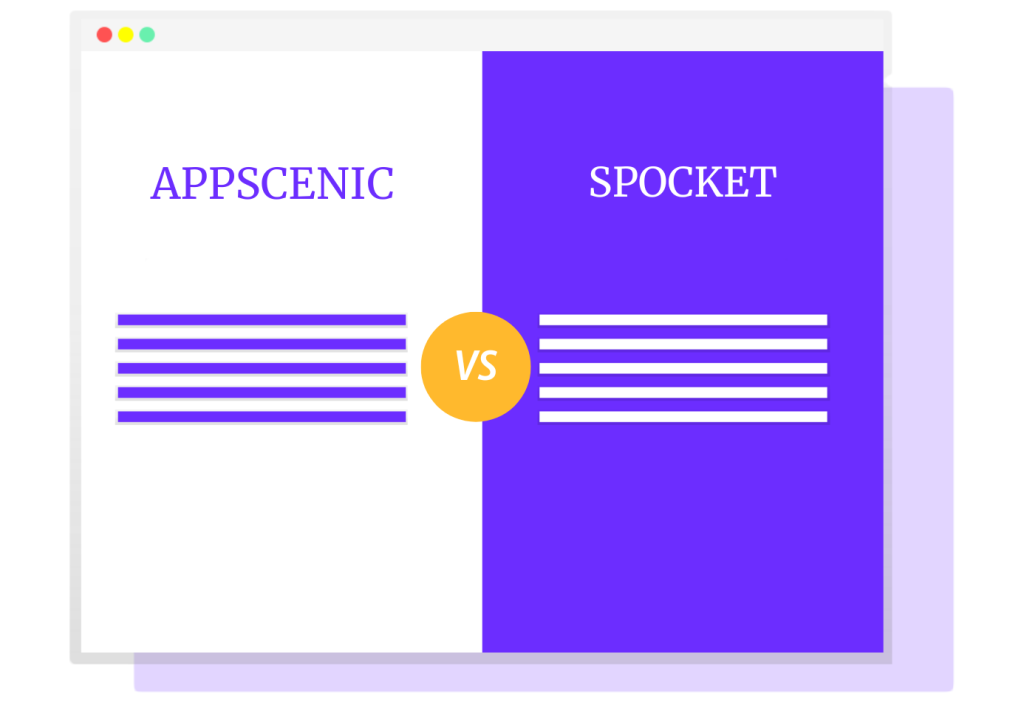Are you looking for a powerful dropshipping solution and down now to Appscenic vs Spocket?
The e-commerce landscape is vast, and choosing the right tool can be the difference between success and just getting by. With dropshipping becoming an increasingly popular choice, understanding the nuances between platforms like Appscenic and Spocket is crucial.
By selecting the right platform, you can unlock the potential to streamline your business operations, diversify product offerings, and enhance customer satisfaction. But, with both Appscenic and Spocket offering compelling features, the decision might seem challenging.
So let’s dive into a comprehensive comparison to provide you with the insights needed to make an informed choice between both!
*Disclosure: I only recommend products I would use myself, and all opinions expressed here are my own. This post may contain affiliate links that at no additional cost to you, I may earn a small commission.
What is DropShipping?
You should understand dropshipping before learning more about Appscenic and Spocket.
In the case of dropshipping, a retailer doesn’t hold inventory of the goods it sells. Instead, when a business uses the dropshipping model to sell a product, it buys the item from a third party typically a manufacturer or wholesaler, and arranges for delivery to the client. The seller, therefore only deals with the product indirectly.
Here’s a breakdown of the dropshipping process:
- Customer Places an Order: A customer visits a dropshipping store (often an online storefront), selects a product, and completes the purchase.
- Retailer Processes the Order: The retailer receives the order and manually or automatically forwards the order details, including the customer’s shipping address, to the dropship supplier.
- Supplier Ships the Product: The dropship supplier prepares and ships the product directly to the end customer on the retailer’s behalf.
- Customer Receives the Product: The product is delivered to the customer without knowing it came directly from the supplier.
The primary advantages of dropshipping include:
- Low Startup Costs: Since there’s no need to purchase inventory upfront or maintain a physical warehouse, starting a dropshipping business requires less initial investment than traditional retail models.
- Low Overhead: Without inventory, the overhead is low. Many drop shippers operate entirely from a home office.
- Wide Product Selection: Retailers can offer a wide range of products to their customers since they don’t have to pre-purchase the items they sell. They can list products from multiple suppliers in their store.
- Flexibility: A dropshipping business can be run anywhere with an internet connection. This makes it a popular choice for budding entrepreneurs.
However, there are also challenges:
- Lower Profit Margins: Generally, dropshipping tends to have thinner profit margins compared to models where products are bought in bulk.
- Inventory and Supply Chain Issues: Since drop shippers don’t control their stock, they’re at the mercy of their suppliers for inventory levels and fulfillment speeds.
- Less Control Over Shipping and Lead Times: The retailer doesn’t have control over the shipping process and might face customer dissatisfaction if the supplier delays shipping.
Dropshipping can be an attractive model for those looking to start an e-commerce business without a significant upfront investment. Still, like any business model, it requires diligent research, management, and customer service to succeed.
Overview of Appscenic
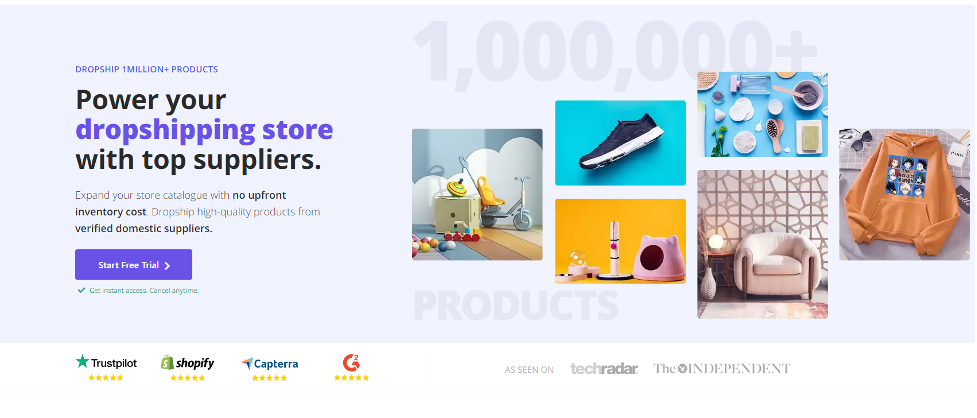
AppScenic enters the dynamic e-commerce ecosystem as a breath of fresh air. This platform, created specifically for digital-age business owners, is an end-to-end solution meant to simplify the difficulties of drop shipping.
It was designed to change how online retailers source, list, and handle products. Also, it was inspired by the desire to streamline e-commerce operations.
- Seamless Integration: Capability to integrate smoothly with popular e-commerce platforms such as Shopify, WooCommerce, and BigCommerce.
- Expansive Product Catalog: A diverse array of products across multiple niches and categories, offering retailers variety and flexibility.
- Order Automation: Automatic order processing allows retailers to operate efficiently without manual intervention.
- User-Friendly Dashboard: An intuitive interface providing a comprehensive overview of sales, orders, and other essential metrics.
- Customizable Product Listings: Tools to customize product descriptions, images, and pricing to fit the retailer’s brand.
- Supplier Rating System: An inbuilt system to rate and review suppliers based on product quality, shipping times, and reliability.
- Payment Gateway Integration: Seamless integration with popular payment gateways for efficient transaction processing.
- Secure Transactions: Advanced security features to ensure that both retailer and customer data are protected.
- Customer Support and Resources: Access to a responsive support team and a library of tutorials, guides, and best practices.
Some advantages of Appscenic you might want to know –
- User-Friendly Interface: The platform is designed with users in mind. Its intuitive layout ensures even those new to e-commerce can navigate with ease.
- Diverse Product Range: Catering to multiple niches, Appscenic ensures businesses are open in their product offerings.
- Dedicated Support: As a testament to their commitment to excellence, Appscenic offers responsive and knowledgeable customer support, ready to assist users at every step.
- Emerging Supplier Network: Appscenic’s supplier network is growing as a relatively new entrant. While diverse, it might not be as vast as some established competitors.
- Feature Development: As with any burgeoning platform, certain features might still be in the refinement phase. This means users could encounter occasional updates and changes.
Overview of Spocket
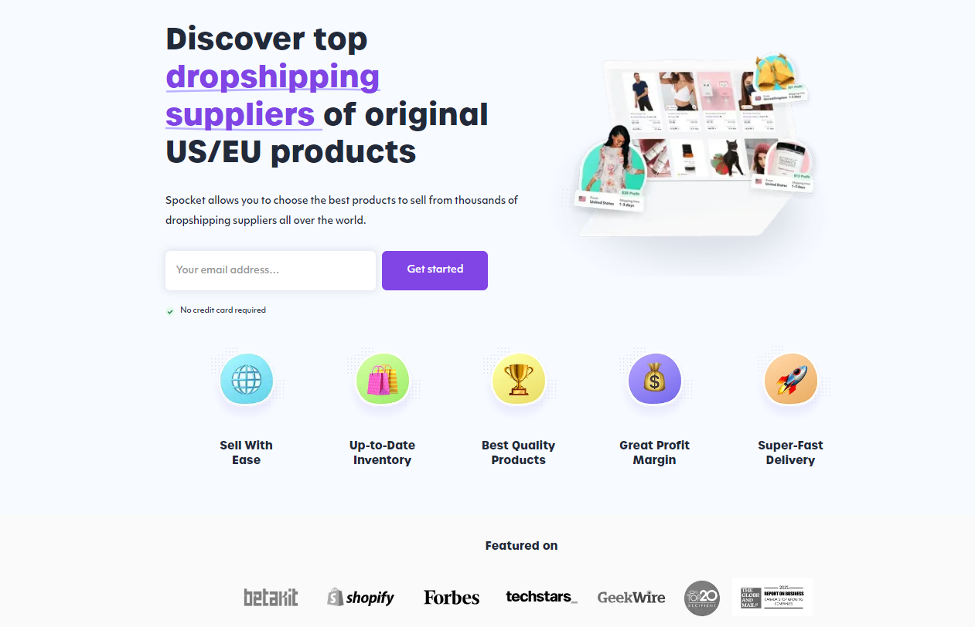
Spocket has strengthened its image as a reputable and dependable platform for e-commerce enthusiasts, making it a beacon in the congested dropshipping industry. Spocket, distinguished by its emphasis on quality and supplier dependability, has changed the perception of dropshipping.
While many platforms provide a wide range of products, Spocket stands out by curating an authentic, high-quality selection primarily derived from North America and Europe.
- Curated Suppliers: Spocket selects its suppliers through a rigorous vetting process to ensure high-quality products. Many of these suppliers are based in the U.S. and Europe, which can result in quicker shipping times for certain markets.
- Seamless Integration: Spocket can be easily integrated with popular e-commerce platforms like Shopify and WooCommerce, allowing for quick setup and product listing.
- Branded Invoicing: Retailers can customize their invoices, adding a personal touch and enhancing the professional image of their store.
- Real-time Inventory Updates: The platform offers automatic inventory adjustments, ensuring out-of-stock products are updated in real-time, preventing overselling issues.
- Sample Orders: Retailers can order product samples from suppliers, allowing them to inspect the quality before listing it for their customers.
- Discounted Products: Products sourced from Spocket often come at a discount, enhancing retailer profit margins.
- Global Pricing Rules: Users can set pricing rules that automatically adjust the price based on a set markup or multiplier, saving time and ensuring consistent profit margins.
- Automatic Order Fulfillment: The platform automates the order process, streamlining operations and reducing manual interventions.
- Tracking Number Sync: Once an order is shipped, tracking numbers are automatically synced, allowing both the retailer and customer to monitor delivery.
- Quality Assurance: With its curated selection, Spocket reduces the risk of low-quality products infiltrating your store, ensuring higher customer satisfaction and fewer returns.
- Swift Shipping: Given its emphasis on North American and European suppliers, most products on Spocket enjoy a faster shipping timeframe, a key advantage in today’s instant gratification consumer landscape.
- Mature Platform: Having been in the industry for a considerable duration, Spocket offers a refined user experience devoid of teething issues that newer platforms might experience.
- Discounted Products: Spocket often offers products at discounted rates, enabling retailers to enjoy better profit margins.
- SEO Recommendations: Spocket offers real-time SEO suggestions when listing products, ensuring each product page is optimized for search engines.
- Premium Pricing: Quality comes at a cost. Spocket’s commitment to superior products and suppliers means its pricing might be higher, potentially deterring smaller businesses or startups.
- Limited Global Diversity: While focusing on North American and European suppliers ensures quality, it somewhat limits the global diversity of available products.
Detailed Comparison: Appscenic vs Spocket
Choosing the best dropshipping platform can make or destroy a business in the changing world of e-commerce. Appscenic and Spocket are two of the sector’s top competitors. Each has unique advantages, advantages, and disadvantages.
Let’s look deeply into a thorough comparison of Appscenic vs Spocket to determine which platform dominates specific domains.
- Appscenic: A newer entrant to the market, Appscenic aims to attract a broad spectrum of users. Its tiered pricing structure caters to everyone from budding entrepreneurs to established e-commerce giants. The pricing tiers allow for scalability, meaning as a business grows, it can upgrade to a plan that suits its expanded needs. Frequent promotional discounts and trial periods further enhance its appeal.
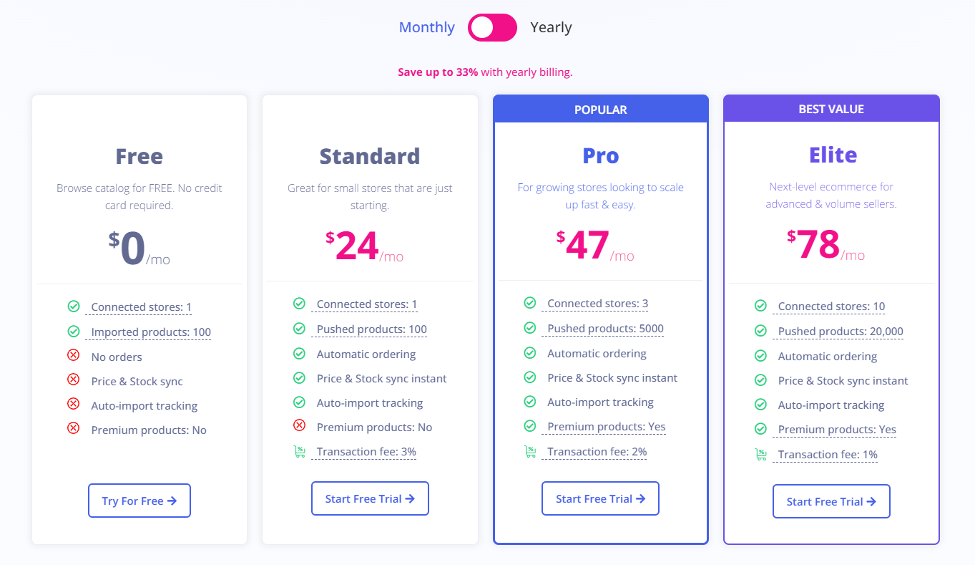
- Spocket: Spocket’s reputation for quality is mirrored in its pricing. The platform positions itself as a premium solution, reflected in its somewhat higher price point. However, the cost is justified by the premium product selection, faster shipping times, and robust features. For businesses prioritizing quality and brand reputation, Spocket’s pricing might be considered a valuable investment.
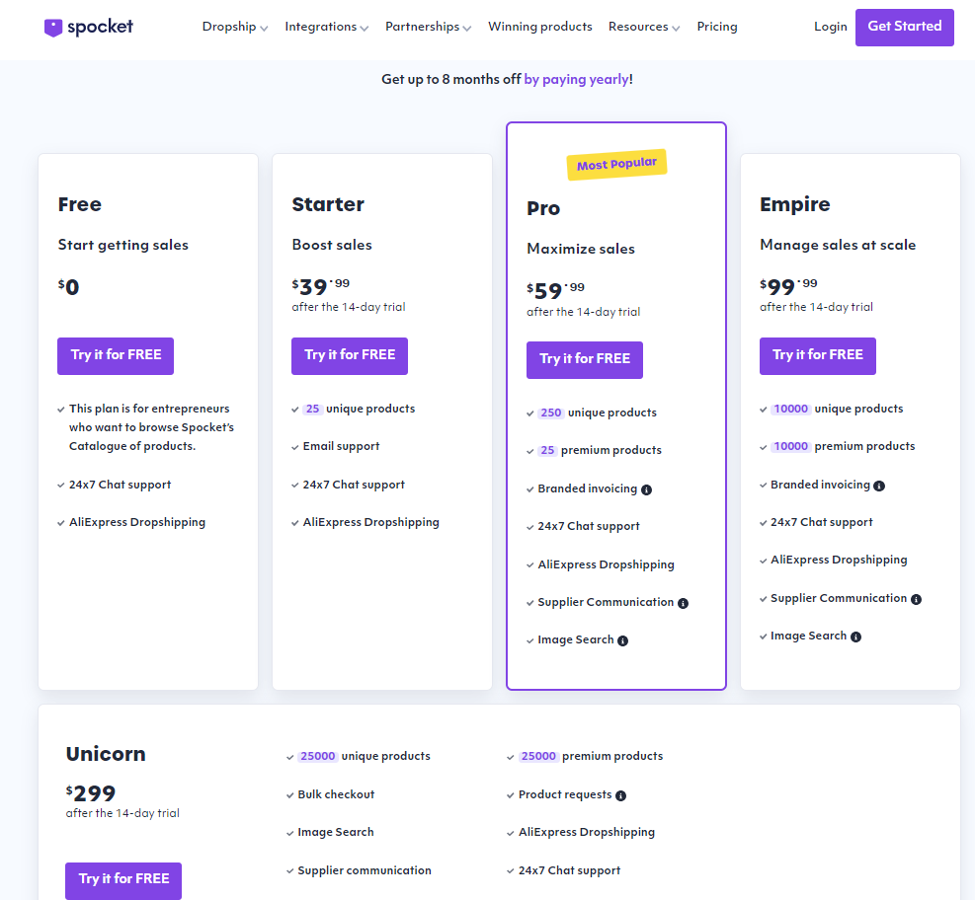
- Appscenic: Appscenic prides itself on its expansive product catalog. Retailers can indulge in a wide selection with various items spanning diverse categories. From fashion to tech and home decor, Appscenic offers variety, allowing businesses to diversify their offerings and cater to a broader audience.
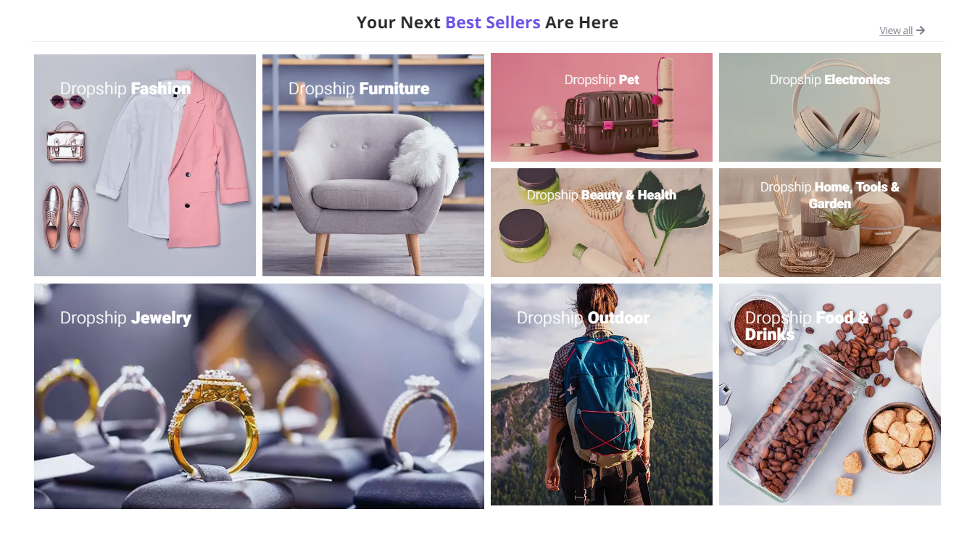
- Spocket: While Spocket may not match Appscenic in sheer volume, its curated product selection is where it shines. Spocket handpicks its suppliers, emphasizing quality, predominantly from North America and Europe. This selective approach ensures that every product listed meets a standard of excellence.
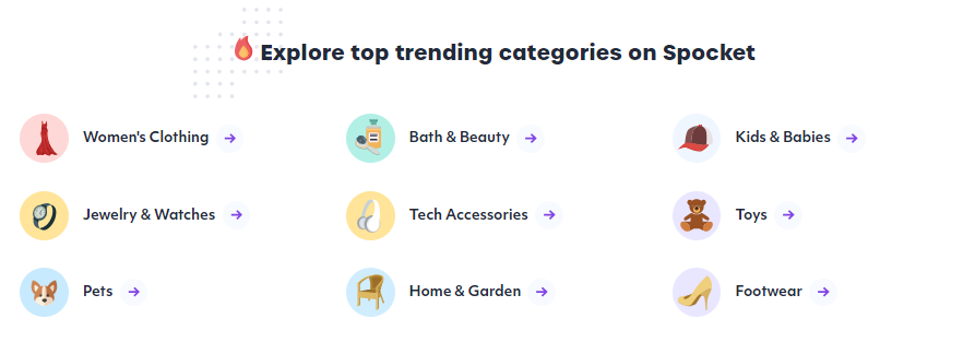
- Appscenic: Acknowledging the omnipresence of platforms like Shopify and WooCommerce in the e-commerce domain, Appscenic ensures seamless integration. The emphasis is on minimizing technical friction, allowing even novices to set up their dropshipping store easily. Regular updates also ensure compatibility with emerging platforms and tools.
- Spocket: A veteran in the field, Spocket has honed its integration capabilities. Be it Shopify, WooCommerce, Wix, or BigCommerce, Spocket promises a smooth symbiotic relationship. The maturity of Sprocket’s system guarantees fewer hiccups and a more streamlined user experience.
- Appscenic: One of the hallmarks of Appscenic is its state-of-the-art order management system. Retailers gain a panoramic view of their operations, from order placements to final deliveries. Real-time tracking updates and a comprehensive analytics dashboard allow businesses to monitor performance, address bottlenecks, and enhance efficiency.
- Spocket: With its established presence, Spocket offers a tried and tested order management system. Automated inventory updates ensure businesses never oversell, while real-time tracking instills customer confidence, fostering loyalty. Spocket’s emphasis is on transparency, ensuring every stakeholder in the transaction is always informed.
- Appscenic: Appscenic’s vast supplier network, spanning the globe, offers a variety of shipping options. While this diversity ensures a broader product range, it might lead to variable shipping times. However, Appscenic’s platform provides clear shipping timelines, ensuring customers set accurate expectations.
- Spocket: The real jewel in Spocket’s crown is its swift shipping. Given its supplier concentration in North America and Europe, products often reach customers faster than many other dropshipping platforms. This expedited delivery and transparent tracking leads to enhanced customer satisfaction.
- Appscenic: Recognizing the challenges of a new platform, Appscenic is heavily invested in its customer support. A responsive team, aided by a comprehensive knowledge base, ensures users receive timely assistance. The platform is also receptive to feedback, often iterating based on user suggestions.
- Spocket: Years in the market have allowed Spocket to refine its customer support. A vast repository of FAQs, guided tutorials, and a dedicated support team ensures that retailers always find the help they need. The maturity of Spocket’s support system is a testament to its commitment to user satisfaction.
- Appscenic: The e-commerce community is buzzing about Appscenic. User reviews often laud its modern interface, expansive product catalog, and agility with which the platform evolves. While some concerns are raised about occasional glitches, the general consensus is that Appscenic is a promising entrant worth watching.

- Spocket: With its tenure, Spocket enjoys widespread acclaim. Users appreciate the platform’s reliability, curated product selection, and swift shipping. While its premium pricing is occasionally a point of contention, many view it as a justified investment, given the platform’s offerings.
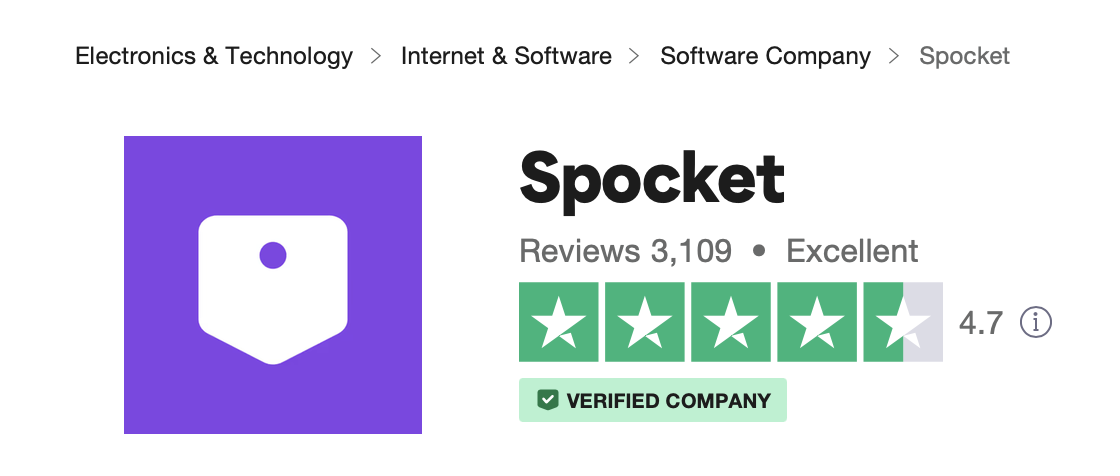
Lastly, you can also check my full Appscenic review for more details.
SEO benefits: Which is best for SEO Optimization
For e-commerce enterprises, search engine optimization (SEO) is essential since it affects how they rank on search engines and, as a result, their organic traffic and possible sales.
Choosing the best dropshipping platform can make or destroy a business in the changing world of e-commerce. So, you must know about the latest e-commerce trends and the SEO benefits for the platforms.
SEO features might be crucial to a store’s success regarding dropshipping platforms like Appscenic and Spocket. Let’s explore the SEO benefits each platform provides to its users.
- Automated Metadata and Alt Texts: Appscenic’s platform is built with a sharp focus on modern SEO requirements. It automates metadata for products, ensuring that product pages have a higher chance of ranking on search engines. Additionally, it offers automated alt texts for product images, a crucial yet often overlooked aspect of SEO.
- SEO-Friendly URL Structures: Recognizing the importance of clean, descriptive URLs, Appscenic ensures all product pages, categories, and collections follow a consistent, SEO-friendly structure. This aids in better indexation and user understanding.
- Integrated Blogging Platform: Content is king in the world of SEO. Appscenic’s integrated blogging platform allows retailers to create SEO-optimized content, driving organic traffic and positioning themselves as industry thought leaders.
- Site Speed Optimization: Page load times significantly impact SEO rankings. Appscenic has invested in backend optimizations, ensuring that despite the extensive product listings and images, e-commerce stores maintain a swift load time.
- SEO Recommendations: One of Spocket’s standout features is its SEO recommendation system. As retailers list products, Spocket provides real-time suggestions on title tags, meta descriptions, and keywords. This guidance ensures each product page is optimized for its best shot at high search engine rankings.
- Structured Data Markup: Spocket integrates structured data markup (schema markup) into product listings. This provides search engines with more detailed information about the product, potentially enhancing visibility in rich snippets and boosting click-through rates.
- Mobile-First Optimization: With the surge in mobile shopping, Spocket ensures all its product listings are optimized for mobile viewing. Since mobile optimization is a ranking factor, Spocket users have an edge in mobile search results.
- XML Sitemap Generation: Spocket automatically generates an XML sitemap for each store, ensuring search engines can efficiently crawl and index all pages. This boosts SEO and ensures that new products get indexed faster.
How do AppScenic and Spocket Work Together?
While AppScenic and Spocket are often viewed as competitors in the e-commerce dropshipping landscape, there are scenarios where e-commerce entrepreneurs might seek to leverage both platforms simultaneously.
This can amplify their store’s potential and expand their reach. Here’s a brief overview of how the two can work in tandem:
- Diversified Product Catalog: By utilizing both Spocket’s curated list of quality products and AppScenic’s vast and varied product selection, store owners can create a diverse and appealing product catalog. This diversification caters to a broader audience segment and meets varied customer demands.
- Optimized Store Management: While Spocket might be the primary platform for curated, high-quality products, AppScenic could be used for trend-driven, rapid turnover items. By managing these platforms side by side, businesses can optimize inventory and marketing strategies, targeting different audiences with different products.
- Robust Integration Options: As both platforms support integrations with popular e-commerce platforms like Shopify and WooCommerce, users can manage product listings, orders, and tracking seamlessly. This synergy ensures smooth operations even when sourcing from two different platforms.
- Enhanced SEO Capabilities: Businesses can amplify their store’s visibility by leveraging the distinct SEO features of both platforms. Spocket’s real-time SEO guidance can complement AppScenic’s automated metadata and alt texts, resulting in a well-optimized online store.
Related articles you might want to read:
- Sellvia Review: Pros, Cons, Pricing, and Dropshipping Alternatives.
- 15 Best Dropshipping Website Builders to Build Your Store Seamlessly
Spocket vs Appscenic: Conclusion
Choosing between Appscenic and Spocket boils down to individual preferences and needs. If quality and swift deliveries are your focus, Spocket is the way to go.
For those prioritizing diversity, competitive pricing, and a modern interface, Appscenic is a compelling choice. Understanding one’s business model and audience is crucial regardless of the pick.
